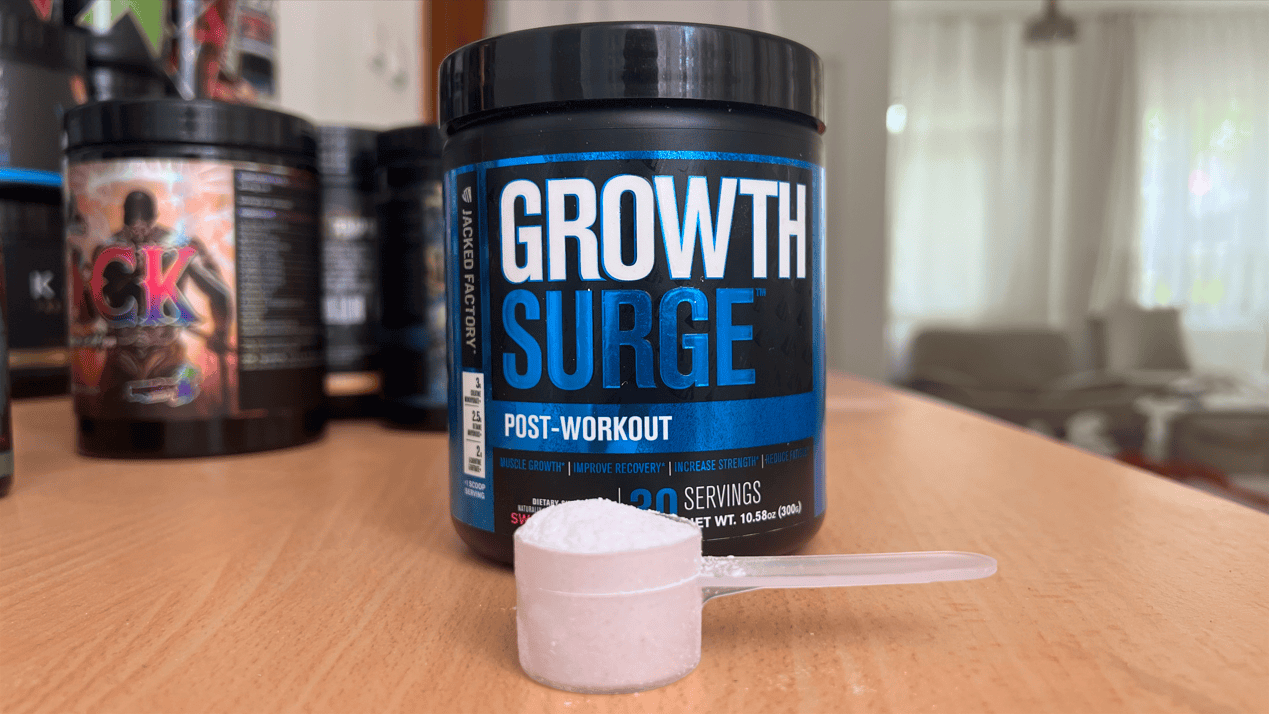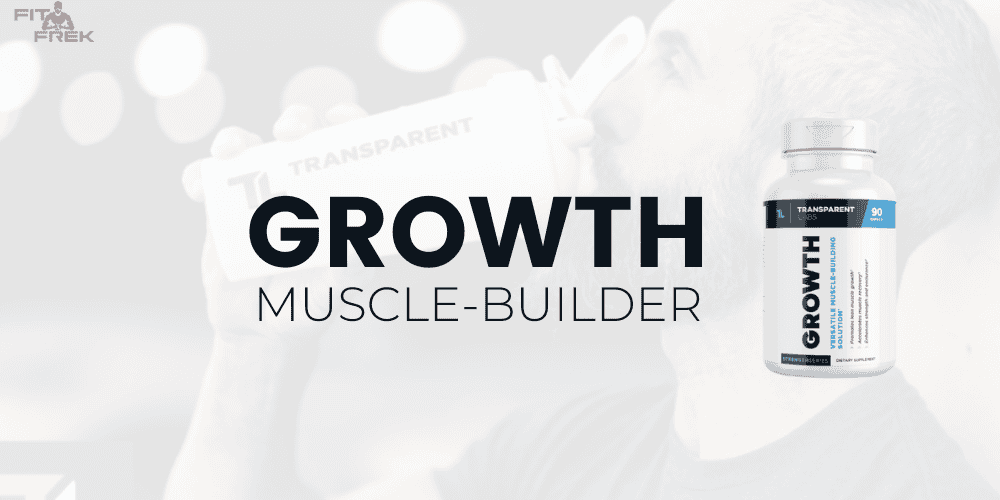
In the ever-evolving world of fitness and nutrition, the era of broscience and anecdotal wisdom is giving way to data-driven decisions and scientific research.
One such area of exploration is the role of phosphatidic acid, a specific diacyl-glycerophospholipid found in cell membranes.
Despite being a minor component of the body's fatty acids, phosphatidic acid plays a crucial role as a precursor of other glycerophospholipids and a signaling molecule.
Phosphatidic acid, in simple terms, is a type of fat that plays a crucial role in cellular processes.
It's a phospholipid, a major component of all cell membranes, acting as a building block for the cells in your body.
In simple terms:

Phosphatidic acid could be the best thing to creatine.
Now, you might be wondering...
"Why should I care?"
Well, if you're into fitness or bodybuilding, phosphatidic acid might just be your new best friend.
Here's why:
It's believed to stimulate the mTOR pathway, which is like the control center for muscle growth.
So, if you're looking to pack on some muscle, phosphatidic acid could be a game-changer.
I know, I know. Science can be a bit dry. But trust me, this is cool stuff.
You see, phosphatidic acid works by stimulating the mTOR pathway. This pathway is like the control center for muscle growth in your body.
When you work out, you create tiny tears in your muscles.
Your body then repairs these tears, and in the process, builds bigger, stronger muscles.
The mTOR pathway is a big part of this process.
Phosphatidic acid is like a key that turns on the mTOR pathway.
When you take phosphatidic acid, you're essentially giving your body the green light to start building muscle.
But that's not all.
Phosphatidic acid also helps your body synthesize protein more effectively
This means that your body can use the protein you eat more efficiently to build muscle.
So, in a nutshell, phosphatidic acid could help you build muscle and get stronger by turning on the mTOR pathway and improving protein synthesis.
And who doesn't want that?
Remember, though, supplements are just one piece of the puzzle.
A balanced diet, regular exercise, and adequate rest are also crucial for muscle growth.
So, keep hitting the gym, eat your protein, and get plenty of sleep.
And consider giving phosphatidic acid a try.
You might just be surprised by the results!

If there's one thing that is certain, it's that creatine can make a great post-workout supplement, like Growth Surge.
Before we dive into the nitty-gritty, let's understand the science behind phosphatidic acid.
Understanding mTOR Signaling
The mechanistic target of rapamycin (mTOR) is a protein that plays a crucial role in regulating cell growth, proliferation, and survival.
It's like the control center for muscle growth.
Phosphatidic acid has been found to stimulate this protein, which is why it's gaining attention in the fitness world.
Phosphatidic Acid and Muscle Protein Synthesis
Muscle growth is all about protein synthesis.
The more your body can synthesize protein, the more muscle you can build.
Research suggests that phosphatidic acid activates the mTOR pathway responsible for protein synthesis, making it a potential ally for those looking to gain muscle mass.
Recent research has shed light on the potential muscle-building benefits of phosphatidic acid, thanks to its interaction with the mechanistic/mammalian target of rapamycin (mTOR) signaling cascade.
mTOR complex 1 (mTORC1), often referred to as the "master regulator of skeletal muscle hypertrophy," is stimulated by phosphatidic acid, which binds directly to it.
Resistance training, with its mechanical tension on skeletal muscle tissue, triggers mTORC1 activation.
This has led some fitness enthusiasts and bodybuilders to suggest that maximizing "time under tension" when lifting weights could enhance muscle growth, a theory that remains a topic of debate.
The crux of the matter is that scientists believe phosphatidic acid supplementation could enhance the mechanical stimulation of mTORC1.
If this theory proves correct, those engaged in resistance training could see increased muscle hypertrophy by supplementing with phosphatidic acid.
This article aims to delve into the key findings from relevant scientific literature to assess the potential benefits of phosphatidic acid use.
We'll also address the popular belief that phosphatidic acid may inhibit muscle protein synthesis when taken with whey protein.
So, if you're looking to turn your training into lean muscle tissue, it's time to let science lead the way.
Phosphatidic Acid and Muscle Growth
Now, let's get to the meat of the matter. Can phosphatidic acid really help with muscle growth?
Evidence from Research
Human studies on phosphatidic acid and its effects on body composition are still in their early stages, but the results are promising.
Several studies show that phosphatidic acid supplementation significantly increases skeletal muscle mass in healthy young-to-middle-age adults engaging in resistance exercise.
Here are some studies related to Phosphatidic Acid and their main findings:
Effects of phosphatidic acid supplementation on muscle ... - PubMed: This study found that phosphatidic acid supplementation increased muscle thickness and strength following an 8-week resistance training program.
The effects of phosphatidic acid on performance and body ... - PubMed: This research suggests that phosphatidic acid increases muscle protein synthesis via direct stimulation of the mammalian target of rapamycin (mTOR), acting as an anabolic supplemental aid.
The effects of phosphatidic acid supplementation on strength, body composition, muscular endurance, power, agility, and vertical jump in resistance trained men: This study found that phosphatidic acid supplementation improved strength, body composition, and athletic performance in resistance-trained men.
Eight Weeks of Phosphatidic Acid Supplementation in Conjunction with ...: This study found that eight weeks of resistance training combined with phosphatidic acid supplementation increased muscle size and strength.
Real-world Applications
So, what does this mean for you?
If you're an athlete, bodybuilder, or just someone looking to gain muscle, phosphatidic acid could be a beneficial addition to your supplement stack.
We've talked a lot about phosphatidic acid, but what does the science actually say?
How does this fascinating molecule work, and why should we care?
To answer these questions, we're going to take a closer look at some of the key studies in this field.
Don't worry, we'll break it down in a way that's easy to understand, even if you're not a scientist.
So, let's dive into phosphatidic acid research...
Study 1: Think of your muscles as a construction site. The mTOR pathway is like the site manager, telling the workers (your cells) to build more muscle. This study found that phosphatidic acid is like a walkie-talkie, helping to pass the message from the site manager to the workers. So, more phosphatidic acid could mean better communication and more muscle growth.
Study 2: This research found that a certain gene, LPIN1, is like a blueprint for making phosphatidic acid in our muscles. Some people have a faulty blueprint, which leads to muscle problems. This tells us that phosphatidic acid is pretty important for keeping our muscles healthy and strong.
Study 3: Imagine your muscles are like a car engine, and mTOR is the ignition that gets the engine running. This study found that phosphatidic acid is like the key that turns on the ignition. So, it plays a big role in getting our muscle engine running and growing.
Study 4: This research looked at a type of phosphatidic acid called lysophosphatidic acid (LPA). It found that LPA is like a multitasking wizard, sending signals all over the body to do lots of different jobs. This shows us that phosphatidic acid is not just a one-trick pony – it's got a whole range of talents.

One of our favorite phosphatidic acid supplements: Transparent Labs Growth.
Knowing about phosphatidic acid is one thing, but how do you use it effectively?
Optimal Dosage
The optimal dosage of phosphatidic acid is still up for debate, but most studies use a dosage of around 750 mg per day.
Timing and Consistency
As with any supplement, consistency is key. It's also recommended to take phosphatidic acid before your workout to maximize its effects.
Potential Side Effects of Phosphatidic Acid
Phosphatidic acid is generally well-tolerated, with no adverse events or side effects reported in the studies conducted so far. However, as with any supplement, it's always best to consult with a healthcare professional before starting a new regimen.
In the realm of fitness supplementation, the interplay between phosphatidic acid and whey protein has been a topic of scientific intrigue.
A study conducted on rodents in 2015 delved into the effects of administering phosphatidic acid in conjunction with whey protein on skeletal muscle protein synthesis.
The findings were somewhat paradoxical, with muscle protein synthesis showing a decrease in rats given a combination of whey protein and phosphatidic acid, compared to those given either supplement alone.
Despite this, the mTOR pathway activity was markedly elevated in the group receiving the combination, suggesting a temporal effect between phosphatidic acid and whey protein.
Optimal Supplementation Timing:
The researchers proposed that the observed outcome could be due to phosphatidic acid delaying the kinetics of muscle protein synthesis post-whey protein ingestion.
Their recommendation was to separate the doses of whey protein and phosphatidic acid by at least three hours to maximize the anabolic effects of each.
Alright, let's get real here. You're probably wondering, "What's in it for me?" Well, let me break it down for you. Here are some of the potential benefits of phosphatidic acid:
Muscle Growth: This is the big one. Phosphatidic acid stimulates the mTOR pathway, which is like the control center for muscle growth. It's like having a personal trainer inside your cells, pushing them to grow bigger and stronger.
Improved Protein Synthesis: Phosphatidic acid isn't just about muscle growth. It also helps your body synthesize protein more effectively. Think of it as a translator, helping your body understand how to use the protein you're eating to build muscle.
Enhanced Strength: Some studies have found that phosphatidic acid can help increase strength. So not only could you look more muscular, but you could also be lifting heavier weights. It's a win-win!
Potential Cognitive Benefits: This one's a bit of a bonus. Some research suggests that phosphatidic acid could help improve cognitive function when taken with other phospholipids. So, not only could you be getting physically stronger, but you might also experience some brain gains!
In terms of safety, phosphatidic acid seems to be well-tolerated. But remember:

Let's talk about Transparent Labs and their product called Growth.
This supplement has been making waves in the fitness community, and it's all thanks to one key ingredient: phosphatidic acid.
But does it really work? And is it the right supplement for you? Let's dive in and find out.
Transparent Labs prides itself on being, well, transparent.
They don't hide behind proprietary formulas or secret ingredients.
What you see is what you get. And in the case of Growth, what you get is phosphatidic acid.
This molecule is derived from lecithin, which can be found in foods like soybeans and egg yolk.
But don't worry, vegans, the phosphatidic acid in Growth is plant-based.
So, what's the big deal about phosphatidic acid?
Well, it's all about mTOR, a protein that plays a crucial role in muscle growth.
Think of mTOR as the conductor of your muscle-building orchestra.
Phosphatidic acid is like sheet music, guiding the conductor and helping the orchestra play in harmony.
The result? Potentially more muscle growth.
But don't just take my word for it. There's some pretty cool science to back this up.
One study found that phosphatidic acid enhanced mTOR activation and contributed to muscle growth over time.
Another study found that men who took 750 mg of phosphatidic acid for 8 weeks saw a 3.4% greater increase in their strength in the back squat and 2.5% greater increases in lean body mass than those who didn’t take it.
Now, I know what you're thinking. "That sounds great, but what's the catch?"
Well, the catch is that these studies are still preliminary.
They were conducted with a small number of subjects, so we can't say for sure that phosphatidic acid will have the same effects for everyone.
And then there's the cost.
Growth comes with 30 servings and costs $57.99, which works out to $1.93 per serving.
That's a bit steep, especially considering that phosphatidic acid can be extracted from soybeans, a relatively inexpensive source.
So, does phosphatidic acid work?
The preliminary evidence suggests that it could help increase muscle growth and improve exercise performance.
But as always, it's important to do your own research and consult with a healthcare professional before starting any new supplement regimen.
If you're interested in trying out Growth, you can find it on Transparent Labs’ official website.
Remember, the journey to muscle growth is a marathon, not a sprint.
Supplements like phosphatidic acid can potentially help you along the way, but they're not a magic bullet.
A balanced diet, regular exercise, and adequate rest are just as important, if not more so.
So keep pushing, stay consistent, and you'll see the results you're after.
For more information, you can check out the full Transparent Labs Growth review.
What is phosphatidic acid?
Phosphatidic acid is a type of fatty acid found in cell membranes. It's been gaining attention in the fitness world due to its potential role in muscle growth.
How does phosphatidic acid work?
Phosphatidic acid works by stimulating the mTOR pathway, a key regulator of muscle growth. This makes it a potentially valuable supplement for those looking to gain muscle.
What is the recommended dosage of phosphatidic acid?
Most studies use a dosage of around 750 mg of phosphatidic acid per day. However, it's always best to consult with a healthcare professional before starting any new supplement regimen.
Are there any side effects of phosphatidic acid?
Phosphatidic acid is generally well-tolerated, with no adverse events or side effects reported in the studies conducted so far.
How does phosphatidic acid compare to other muscle-building supplements?
While phosphatidic acid is not as well-known as other muscle-building supplements like protein powders or creatine, its unique mechanism of action makes it a potentially valuable addition to your supplement regimen.
Can we effectively increase muscle protein synthesis by supplementing with phosphatidic acid?
Yes, research suggests that phosphatidic acid can stimulate the mTOR pathway, which is a key regulator of muscle protein synthesis. This means that supplementing with phosphatidic acid could potentially enhance your body's ability to build muscle.
Is phosphatidic acid legit?
Yes, phosphatidic acid is a legitimate supplement that has been studied for its potential benefits for muscle growth. However, as with any supplement, it's important to do your research and consult with a healthcare professional before starting a new regimen.
Can I just take glycerolphosphate instead of phosphatidic acid?
Glycerolphosphate is another supplement that some people use to stimulate the mTOR pathway. However, the two supplements work in slightly different ways and may have different effects. It's best to consult with a healthcare professional to determine which supplement is right for you.
How is phosphatidic acid in a particular membrane recognized over phosphatidic acid in another?
Phosphatidic acid can be recognized in a particular membrane over another due to the presence of specific proteins that bind to and interact with it. These proteins can be located in specific areas of the cell, allowing them to interact with phosphatidic acid in one membrane but not another.
Does phosphatidic acid really help grow muscle?
Research on phosphatidic acid has shown promising results, with several studies indicating that it can stimulate muscle protein synthesis and potentially enhance muscle growth. However, more research is needed to fully understand its effects and how it compares to other muscle-building supplements.
So, is phosphatidic acid the secret to unlocking new muscle growth? Is It worth it?
While more research is needed, the current evidence suggests that it could be a valuable tool for those looking to gain muscle.
However, it's important to remember that no supplement can replace a balanced diet, regular exercise, and adequate rest.
Useful Links
 About FitFrek
About FitFrekFitFrek operates as an independent platform, offering comprehensive workouts, programs, routines, guides, and unbiased reviews to accelerate your progress. We pride ourselves on our honesty, delivering straightforward and candid insights. FitFrek does not offer medical advice, diagnosis, or treatment services.
Session expired
Please log in again. The login page will open in a new tab. After logging in you can close it and return to this page.